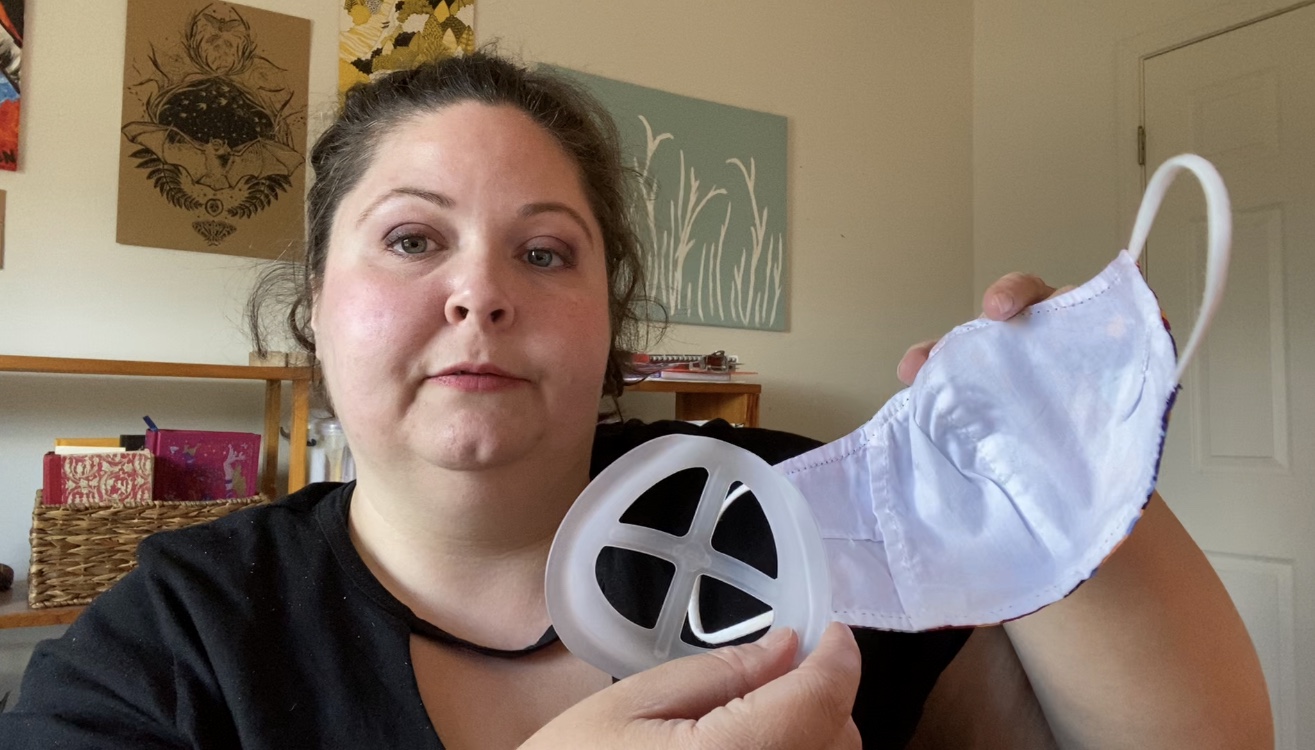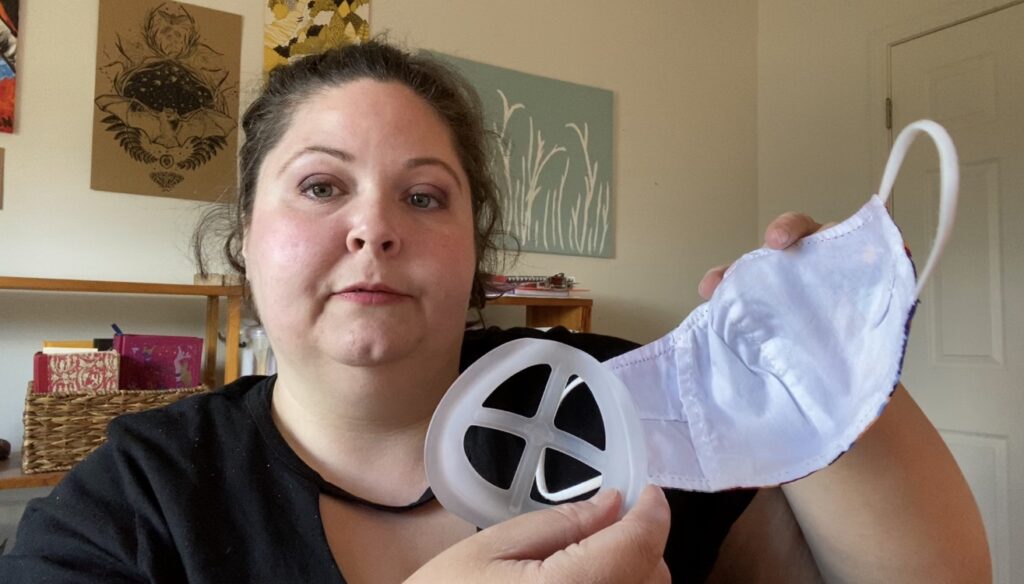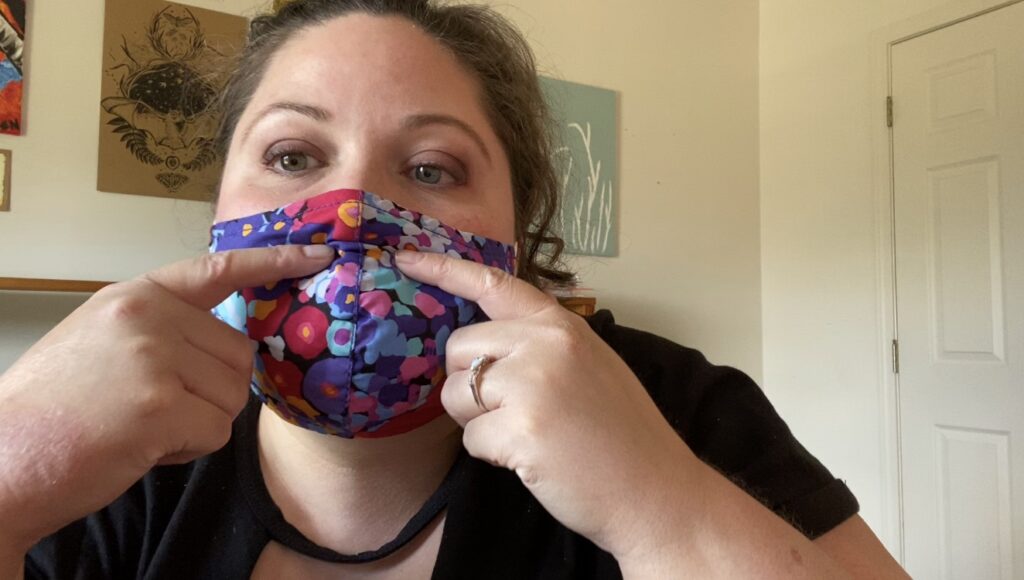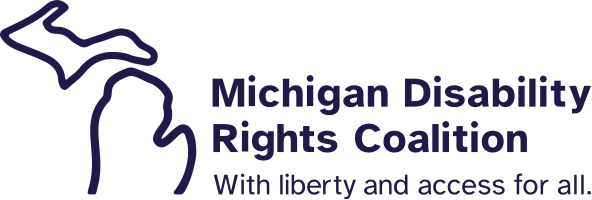AT to Help with Wearing a Mask!
Tuesday, August 18, 2020

[Image description: the featured image of this video is of Jen Mullins, a white woman who has her wavy, brown hair up in a ponytail. Jen is smiling under a floral printed mask and is holding a silicone mask insert on the outside of her mask while holding up a thumbs up. Note: the silicone mask insert goes inside the mask, but for this photo Jen is holding it in front of the mask to show what it looks like. In the background is a wooden bookshelf, a wall with various art pieces, and a closet door. End image description.]
By Jen Mullins, BS, CTRS, MATP Staff
The Centers for Disease Control and Prevention (CDC) says that wearing masks can help prevent the spread of the Coronavirus. Wearing a mask is really important AND wearing a mask can be really uncomfortable. For someone who is Neuodiverse, on the Autism Spectrum, has Attention Deficit Hyperactivity Disorder (ADHD), or has another sensory-related disability, wearing a mask “as is” can be really difficult. It seems like this aspect is getting left out of conversations of mask-wearing and I think we need to make space for it and come up with solutions & improvements.
For me, something I have a hard time with is inhaling while I am wearing a mask. That sensory of the fabric being pulled into my mouth when I’m breathing makes me feel really anxious and when I’m breathing hard, it makes me feel like I am not getting enough air. I am aware that there have been tests that show that mask wearers aren’t actually getting less air, and my response is that unfortunately this knowledge & peace of mind doesn’t make it easier for me to breathe while wearing a mask. I’ve been researching possible solutions like wearing a face shield instead of a mask, but am unsure if that would work for me and my upper body shape. Also, according to the CDC, “At this time, it is not known what level of protection a face shield provides to people nearby from the spray of respiratory droplets from the wearer. There is currently not enough evidence to support the effectiveness of face shields for source control. Therefore, CDC does not currently recommend use of face shields as a substitute for masks.”


Recently I learned about a silicone insert that can be worn inside masks that acts as a flexible, hollow frame that lifts the fabric of the mask off of the wearer’s mouth. I’ve been trying this silicone insert for a few weeks now and I’m thankful that it has been working for me. I can breathe deeply or quickly and don’t feel like I’m sucking the fabric into my mouth while I’m breathing in. This is the silicone mask insert I use, but there are many others like this from various vendors. Something to note is that I can’t wear my glasses with this insert; the angle of the mask is changed by the insert and my breath goes into my eyes and fogs up my glasses. Some folx have recommended anti-fog coatings for lenses, but I haven’t tried these yet.
 Someone I know mentioned that she has a hard time wearing a mask and initially when she puts it on she has a difficult time dealing with the new sensory feedback her body gives her. A strategy that works for her is to put a jolly rancher candy in her mouth right before she puts her mask on. She says that the candy does a good job distracting her and helps her get used to the mask.
Someone I know mentioned that she has a hard time wearing a mask and initially when she puts it on she has a difficult time dealing with the new sensory feedback her body gives her. A strategy that works for her is to put a jolly rancher candy in her mouth right before she puts her mask on. She says that the candy does a good job distracting her and helps her get used to the mask.
What have you found that helps when wearing a mask? Please leave a comment 🙂

